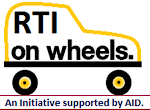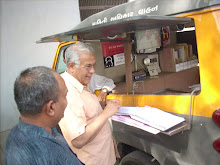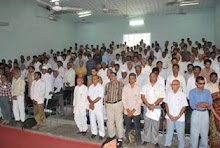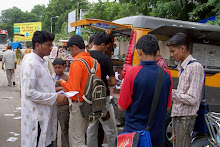Media Nama: New Delhi: Friday, 30 May 2025.
The Ministry of Electronics and Information Technology (MeitY) is unwilling to provide copies of the takedown notices it has sent to Meta and YouTube under Section 79(3)(b) of the Information Technology Act, 2000, according to a response to a Right to Information (RTI) request filed by MediaNama. Section 79 protects platforms from liability for content posted by third parties. However, Part (3)(b) of Section 79 states that platforms can lose this protection if they fail to remove unlawful content after being notified by the government or its agencies.
In response to a request for copies of all takedown notices sent to the two companies between 2023–24, the Ministry merely elaborated on the specifics of the section, who is authorized to send such takedown notices, and what constitutes unlawful information that the government can ask platforms to remove under this provision.
“The notices for takedown of any such [unlawful] information on the intermediary platform are sent directly by the respective appropriate governments or their authorised agencies where the appropriate government can be both the State and Central Government as per the Seventh Schedule to the Constitution,” the Ministry said.
[Note: MediaNama has also filed an RTI seeking blocking orders for the 2024-25 period; we will update the copy with the government’s response.]
Why it matters:
Information about takedown notices sent to social media platforms under Section 79(3)(b) is relevant because the section is currently facing a legal challenge in the Karnataka High Court. In March this year, X (formerly Twitter) filed a petition against the government’s use of this section. Specifically, X has challenged the Sahyog Portal, which automates the process of sending takedown requests under this section. Based on the government’s response to X’s petition in court, between March 2024 and March 2025, it asked platforms to take down 1.10 lakh URLs and accounts from their services.
Additionally, other aspects of blocking orders issued under this section are also under scrutiny as part of a petition filed by Software Freedom Law Centre, India (SFLC.in). The petition challenges a January 2024 notification by the Delhi Lieutenant Governor (LG) designating Delhi Police officials as a nodal agency for issuing takedown notices. SFLC.in argues that Section 79(3)(b) and Rule 3(1)(d) of the IT Rules, 2021 which allows the government to appoint authorised agencies circumvent the established framework for issuing takedowns under Section 69A of the Act. The petition further states that the rule introduces a “broad, undefined power to direct removal of content, without prescribing who may exercise such power and under what safeguards.”
Key details from the government’s response:
The IT Ministry stated that Section 79(3)(b) of the Information Technology Act, 2000, empowers the appropriate government to issue takedown requests to intermediaries regarding the availability of any unlawful information. Under Section 2(1)(e) of the IT Act, the term appropriate Government means:
The Ministry of Electronics and Information Technology (MeitY) is unwilling to provide copies of the takedown notices it has sent to Meta and YouTube under Section 79(3)(b) of the Information Technology Act, 2000, according to a response to a Right to Information (RTI) request filed by MediaNama. Section 79 protects platforms from liability for content posted by third parties. However, Part (3)(b) of Section 79 states that platforms can lose this protection if they fail to remove unlawful content after being notified by the government or its agencies.
In response to a request for copies of all takedown notices sent to the two companies between 2023–24, the Ministry merely elaborated on the specifics of the section, who is authorized to send such takedown notices, and what constitutes unlawful information that the government can ask platforms to remove under this provision.
“The notices for takedown of any such [unlawful] information on the intermediary platform are sent directly by the respective appropriate governments or their authorised agencies where the appropriate government can be both the State and Central Government as per the Seventh Schedule to the Constitution,” the Ministry said.
[Note: MediaNama has also filed an RTI seeking blocking orders for the 2024-25 period; we will update the copy with the government’s response.]
Why it matters:
Information about takedown notices sent to social media platforms under Section 79(3)(b) is relevant because the section is currently facing a legal challenge in the Karnataka High Court. In March this year, X (formerly Twitter) filed a petition against the government’s use of this section. Specifically, X has challenged the Sahyog Portal, which automates the process of sending takedown requests under this section. Based on the government’s response to X’s petition in court, between March 2024 and March 2025, it asked platforms to take down 1.10 lakh URLs and accounts from their services.
Additionally, other aspects of blocking orders issued under this section are also under scrutiny as part of a petition filed by Software Freedom Law Centre, India (SFLC.in). The petition challenges a January 2024 notification by the Delhi Lieutenant Governor (LG) designating Delhi Police officials as a nodal agency for issuing takedown notices. SFLC.in argues that Section 79(3)(b) and Rule 3(1)(d) of the IT Rules, 2021 which allows the government to appoint authorised agencies circumvent the established framework for issuing takedowns under Section 69A of the Act. The petition further states that the rule introduces a “broad, undefined power to direct removal of content, without prescribing who may exercise such power and under what safeguards.”
Key details from the government’s response:
The IT Ministry stated that Section 79(3)(b) of the Information Technology Act, 2000, empowers the appropriate government to issue takedown requests to intermediaries regarding the availability of any unlawful information. Under Section 2(1)(e) of the IT Act, the term appropriate Government means:
- Enumerated in list II of the seventh schedule of the Constitution. This includes police, court services, prisons, and local government, to name a few.
- Relating to any State law enacted under List III of the Seventh Schedule to the Constitution, the State Government, and in any other case, the Central Government.















































































